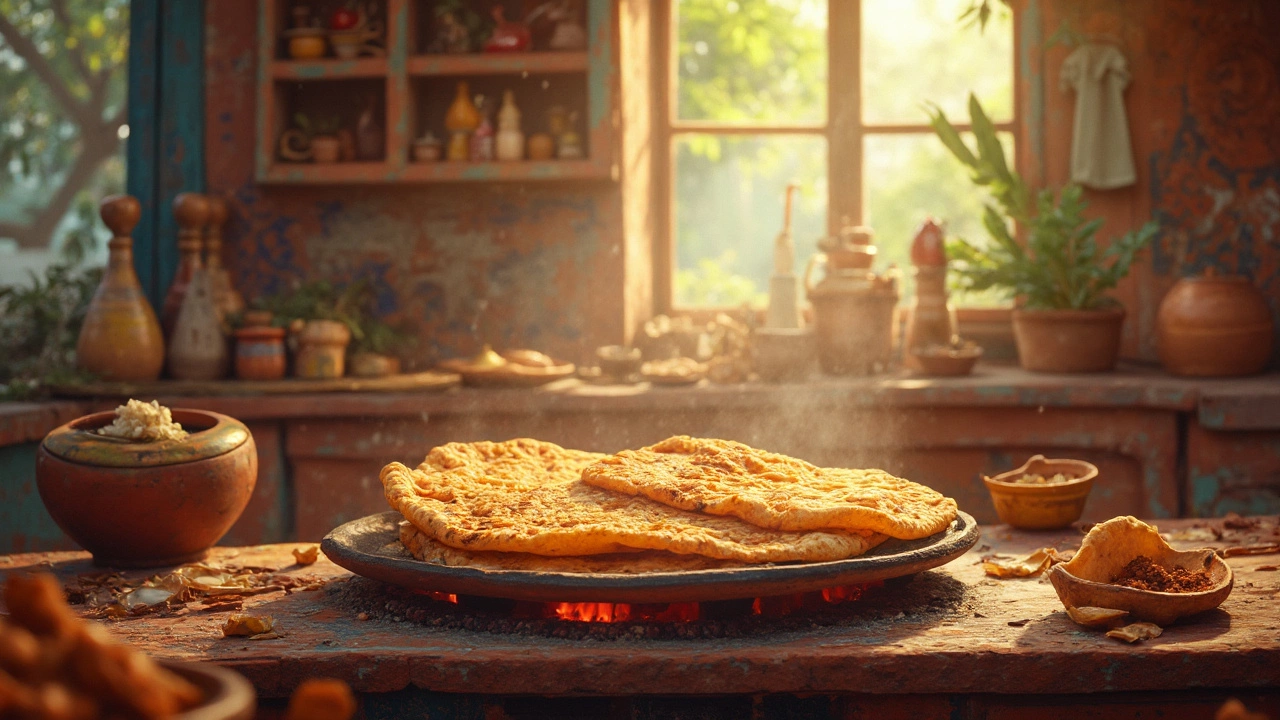Refined Flour Roti – Soft, Fluffy Flatbread Made Simple
When working with refined flour roti, a flatbread made from all‑purpose flour, water, and a pinch of salt. Also known as maida roti, it offers a lighter texture compared to whole‑grain rotis. Refined flour roti is popular for quick meals, but many home cooks struggle with soft texture or proper puffing. The good news? A few science‑backed tweaks can turn a bland chapati into a restaurant‑quality bread.
One key player in that transformation is oil, a fat that coats gluten strands and keeps the dough supple. Adding a tablespoon of oil to the dough enables softer rotis and reduces cracking during cooking. Another game‑changer is baking soda, a leavening agent that creates tiny air pockets in the dough. A pinch of soda triggers a mild chemical reaction when the roti hits the hot pan, enhancing puff and giving the flatbread a light, airy feel. Together, oil and baking soda support the central goal of refined flour roti: a soft, pliable bite that stays tender even after cooling.
Practical Tips to Master Refined Flour Roti
Start by mixing 1 cup of refined flour with ¼ teaspoon salt and ½ teaspoon baking soda, then whisk in 1‑2 tablespoons oil before adding warm water gradually. The dough should feel smooth, not sticky, and rest for 15‑20 minutes; this allows gluten to relax, which prevents shrinking on the skillet. When rolling, aim for a 6‑inch circle about ¼ inch thick—too thin and the roti may tear, too thick and it won’t puff. Cook on a hot, dry tava: first side for 30‑45 seconds, then flip, press gently with a cloth, and watch the roti balloon. If it doesn’t puff, check that the pan is hot enough and that the dough isn’t over‑kneaded; both factors influence puffing success. Serve immediately with ghee or a side of chutney for the classic experience.
Below you’ll find a curated collection of articles that dive deep into each of these elements—why roti fails to puff, how oil timing changes texture, the science behind baking soda in flatbreads, and more. Armed with this knowledge, you’ll be ready to whip up perfect refined flour rotis every time.

Roti Calories: Whole Wheat vs. Refined Flour Explained
Choosing between whole wheat and refined flour rotis can be a daily dilemma for many. While they look similar, the calorie content and nutritional benefits differ quite a bit. We'll explore how many calories are in one roti, analyze the calories in one roti with sabzi, and offer tips for making healthier choices. Discover practical insights to make informed dietary decisions without sacrificing your favorite foods.